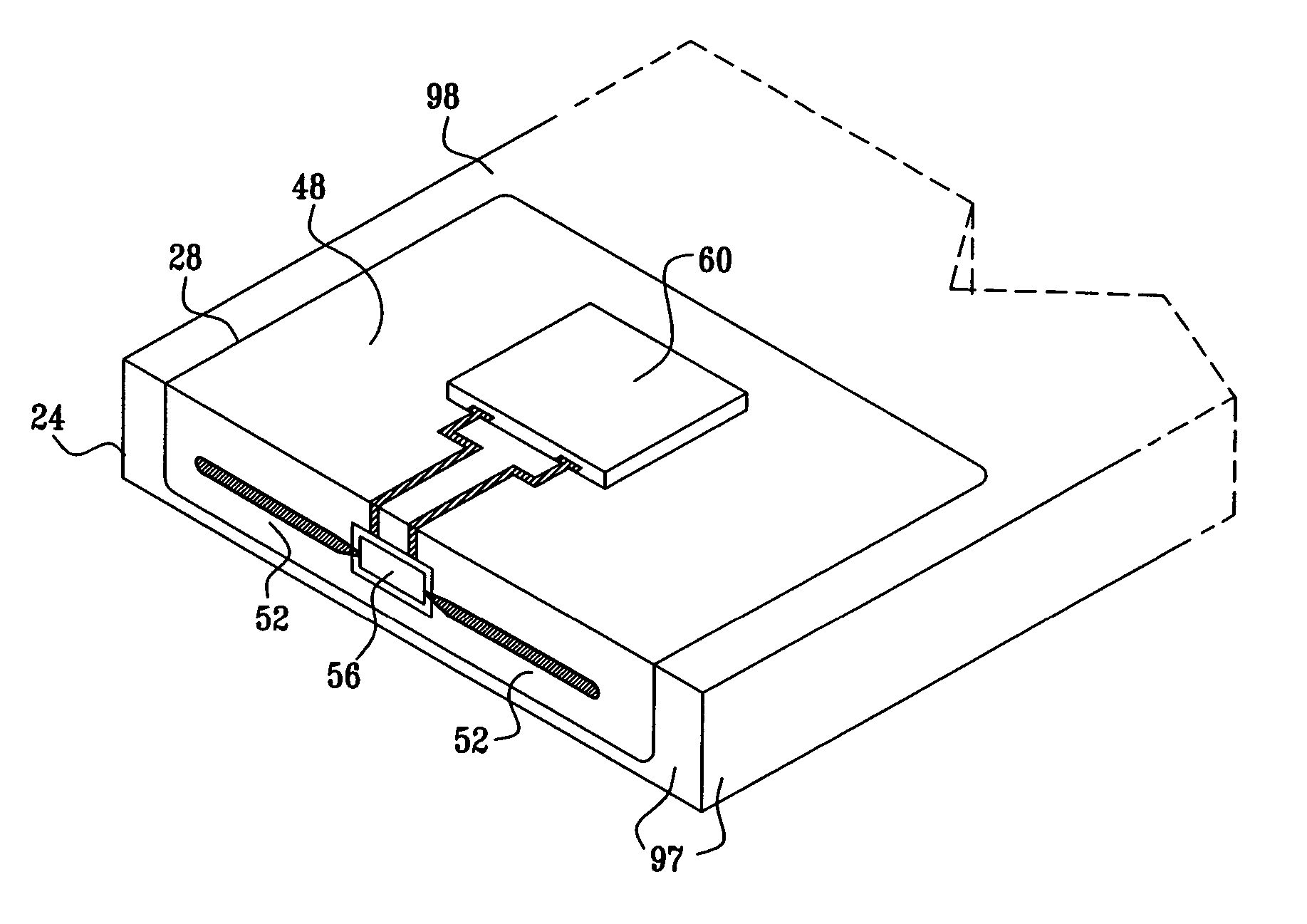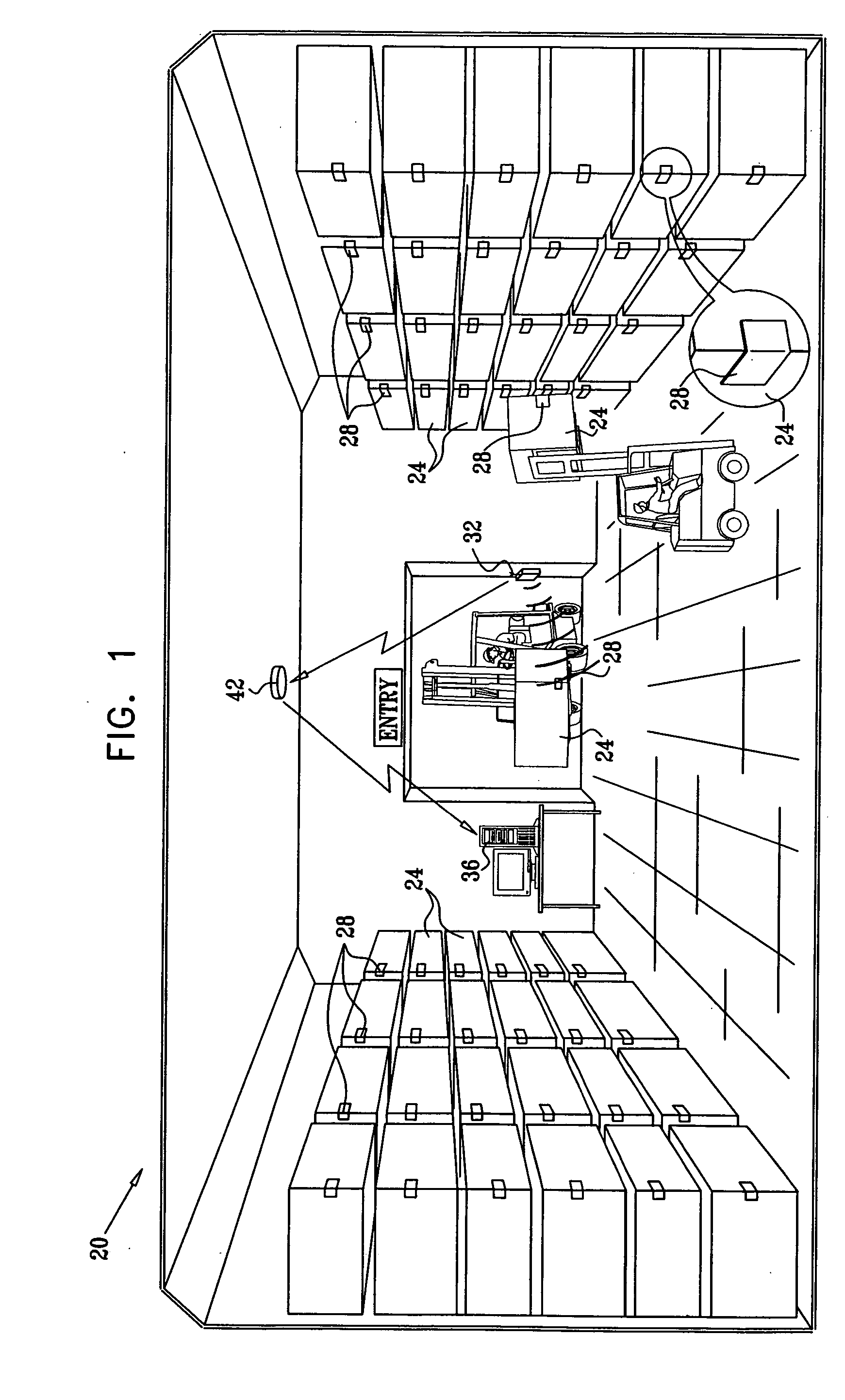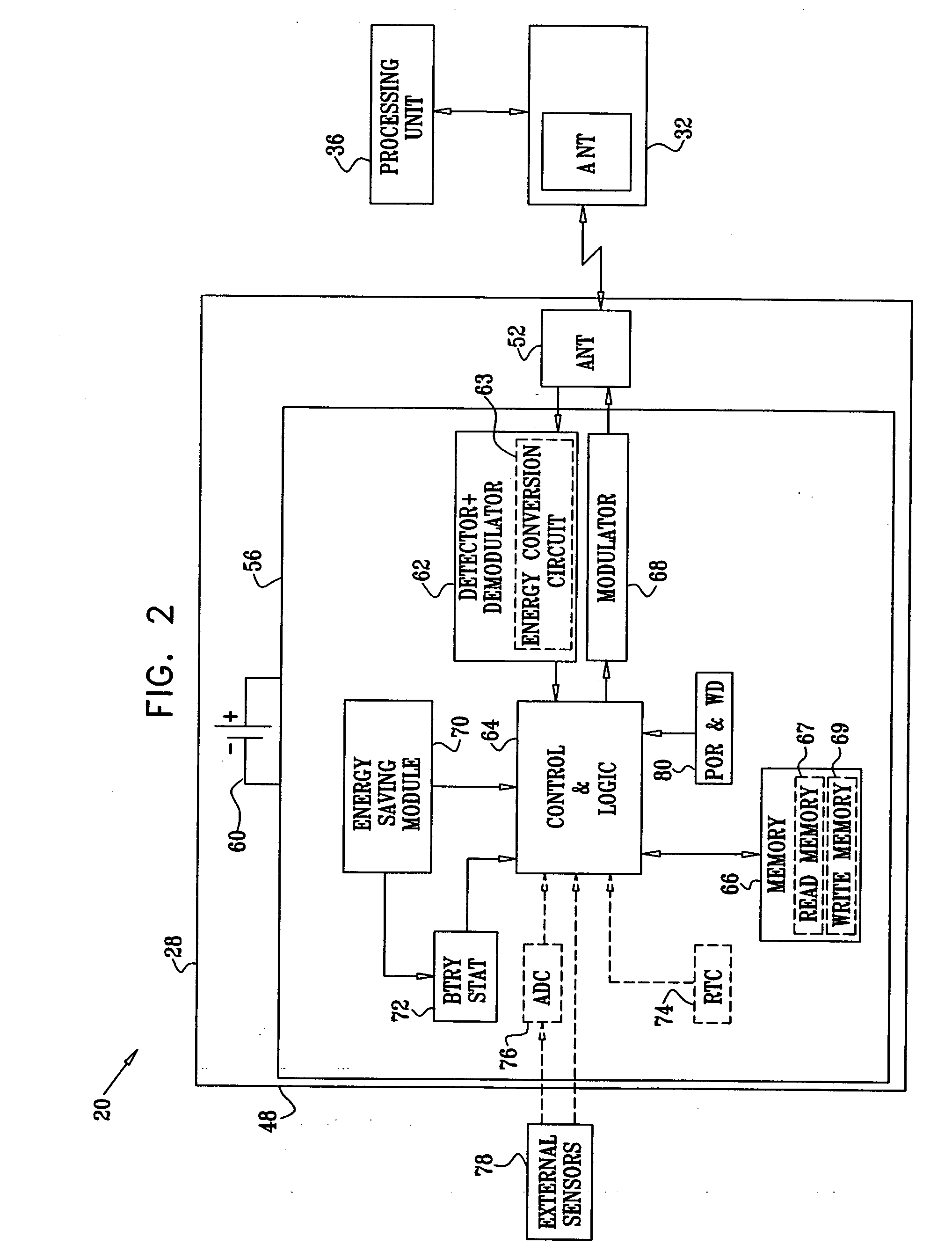Battery-assisted backscatter RFID transponder
- Summary
- Abstract
- Description
- Claims
- Application Information
AI Technical Summary
Benefits of technology
Problems solved by technology
Method used
Image
Examples
implementation examples
[0251] Reference is now made to the following two examples, which together with the above descriptions illustrate the invention in a non-limiting fashion. The following table provides an exemplary specification of a transponder 28, in accordance with an embodiment of the present invention:
ParameterSpecificationOperating frequency860-880 and 902-928 MHzFrequency hopping operationAs authorized for the readerOptimized antenna RCSσ / λ2 = 1 m2 for a 10 × 10 cmlabel areaOptimized antenna ΔRCSΔσ / λ2 = 0.9 RCSFree space read and write30 mrange with reader effectiveisotropic radiated power(EIRP) = 4 WattReader to transponderASK, DSB, SSB, FSK or PSKmodulationTransponder to readerASK or subcarrier PSKmodulationReader to transponder data4.8-128 kbit / secrateTransponder to reader data4.8-512 kbit / secrateReader to transponder codingNRZ, Miller, PIE or PWMTransponder to reader codingdirect or subcarrier, NRZ,FM0 or MillerBasic non-volatile (EEPROM)memory organization:UID64-196 BitsSystem Memory128...
PUM
 Login to View More
Login to View More Abstract
Description
Claims
Application Information
 Login to View More
Login to View More - R&D
- Intellectual Property
- Life Sciences
- Materials
- Tech Scout
- Unparalleled Data Quality
- Higher Quality Content
- 60% Fewer Hallucinations
Browse by: Latest US Patents, China's latest patents, Technical Efficacy Thesaurus, Application Domain, Technology Topic, Popular Technical Reports.
© 2025 PatSnap. All rights reserved.Legal|Privacy policy|Modern Slavery Act Transparency Statement|Sitemap|About US| Contact US: help@patsnap.com



